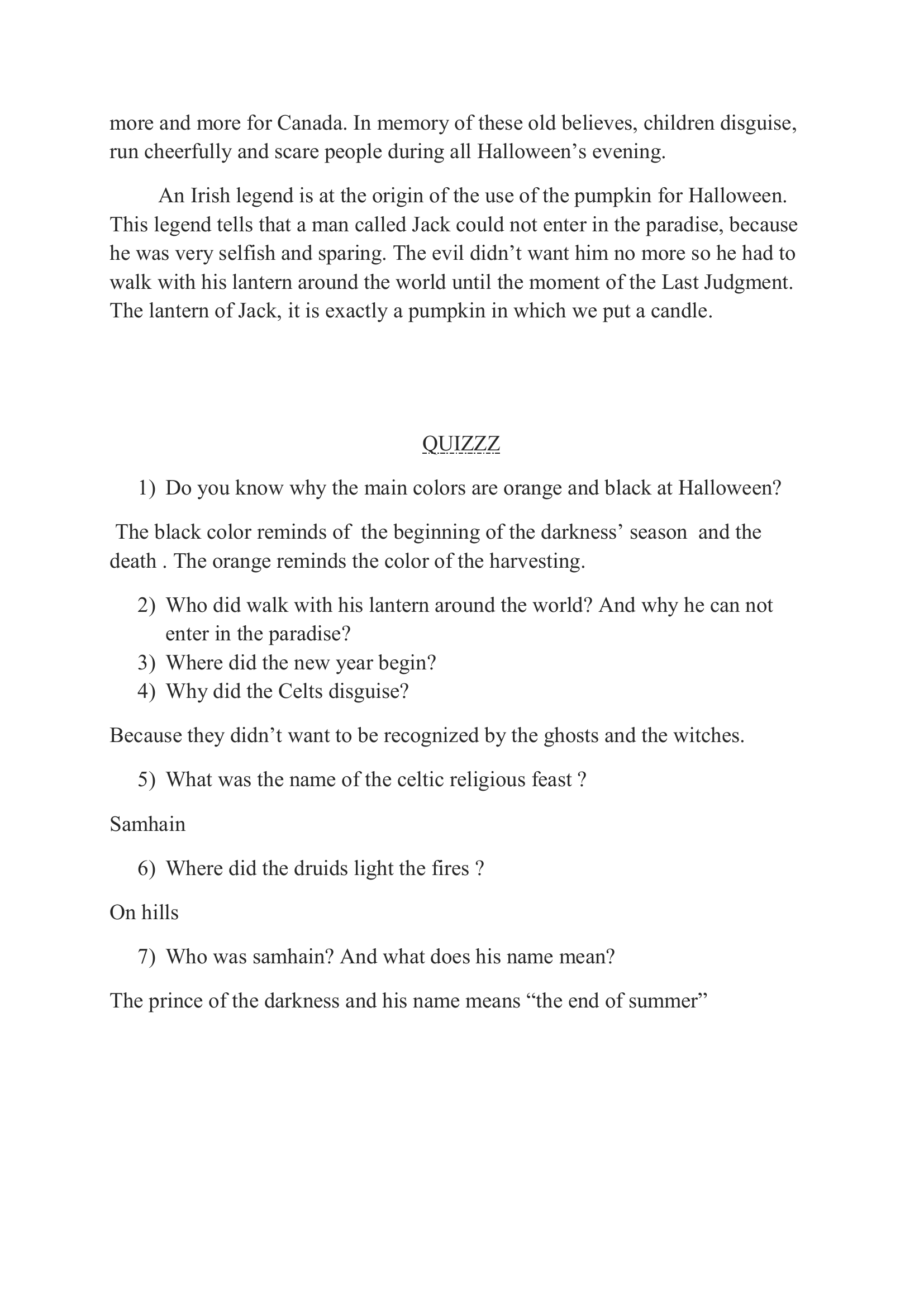Halloween is an Anglo-Saxon folk festival
Publié le 17/05/2012

Extrait du document
«
more and more for Canada.
In memory of these old believes, children disguise,
run cheerfully and scare people during all Halloween’s evening.
An Irish legend is at the origin of the use of the pumpkin for Halloween.
This legend tells that a man called Jack could not enter in the paradise, because
he was very selfish and sparing.
The evil didn’t want him no more so he had to
walk with his lantern around the world until the moment of the Last Judgment.
The lantern of Jack, it is exactly a pumpkin in which we put a candle .
QUIZZZ
1) Do you know why the main colors are orange and black at Halloween?
The black color reminds of the beginning of the darkness’ season and the
death .
The orange reminds the color of the harvesting.
2) Who did walk with his lantern around the world? And why he can not
enter in the paradise ?
3) Where did the new year begin?
4) Why did the Celts disguise?
Because they didn’t want to be recognized by the ghosts and the witches.
5) What was the name of the celtic religious feast ?
Samhain
6) Where did the druids light the fires ?
On hills
7) Who was samhain? And what does his name mean?
The prince of the darkness and his name means “the end of summer”.
»
↓↓↓ APERÇU DU DOCUMENT ↓↓↓
Liens utiles
- shaped canvas shaped canvas, terme anglo-saxon signifiant littéralement « toile découpée
- hard edge hard edge, terme anglo-saxon signifiant « limite nette », apparu à la fin des années cinquante aux États-Unis pour qualifier un procédé pictural qui consiste à peindre sur la toile des bandes de couleurs pures aux contours nettement séparés.
- Capitalisme anglo-saxon
- Définition: ANGLO-SAXON, -ONNE, adjectif et substantif.
- sociologie anglo-saxone














